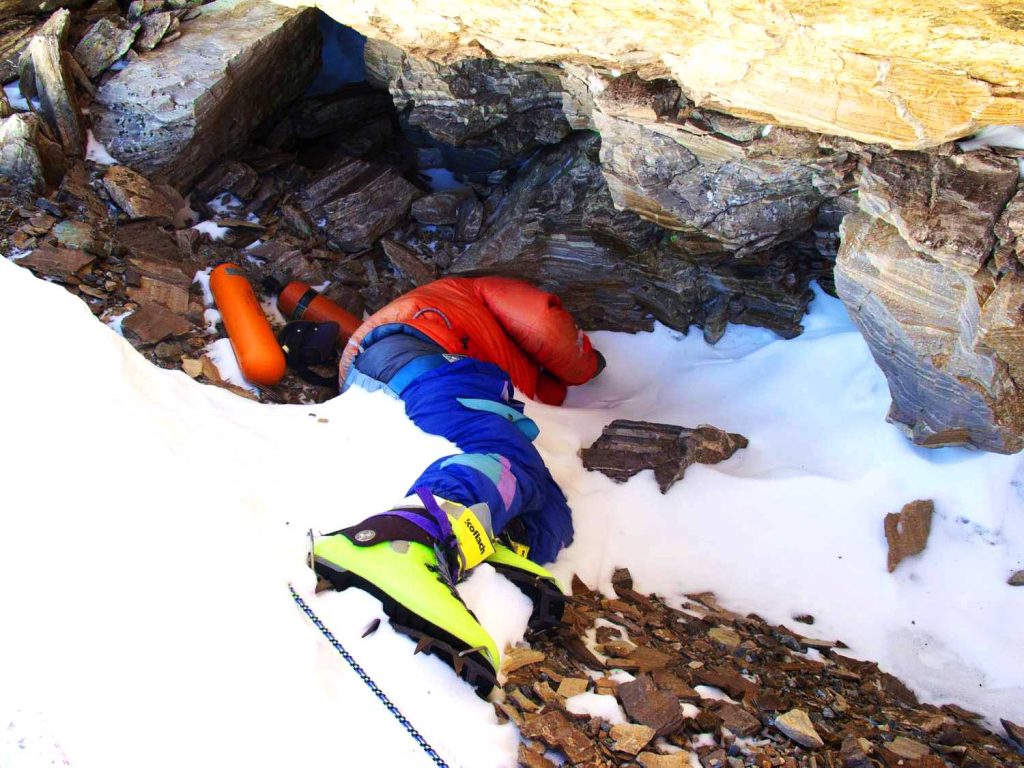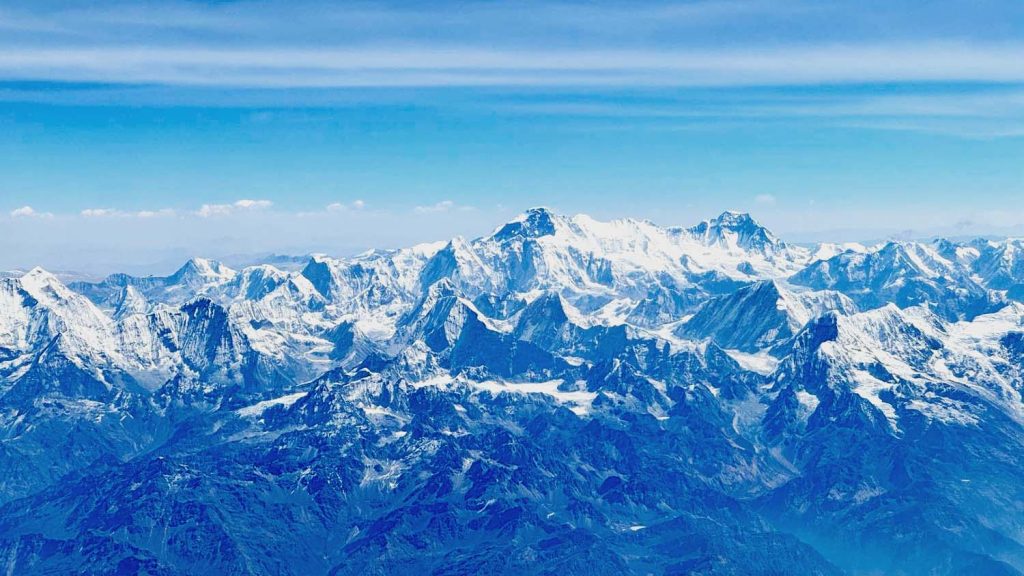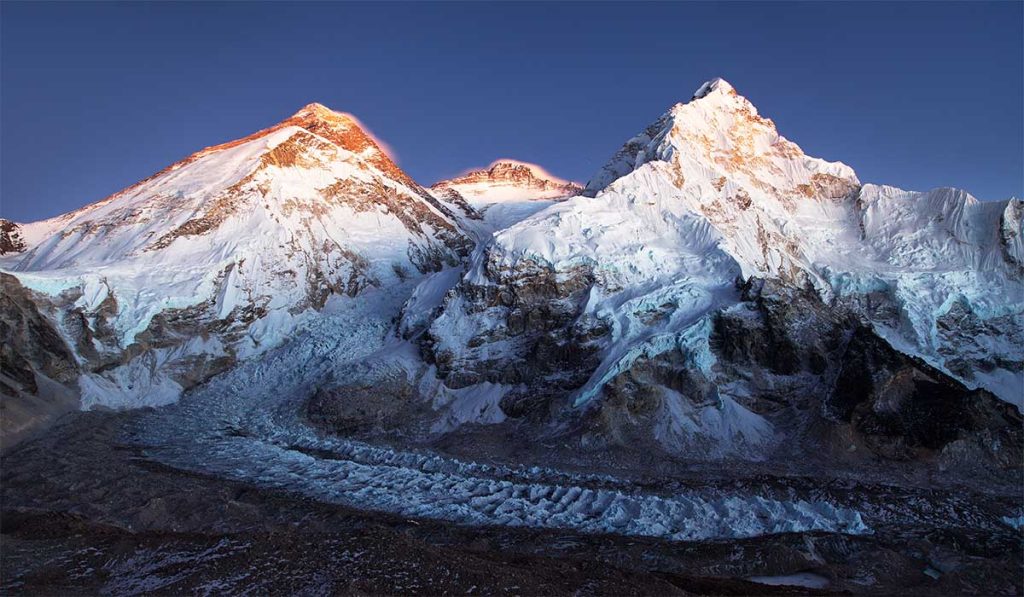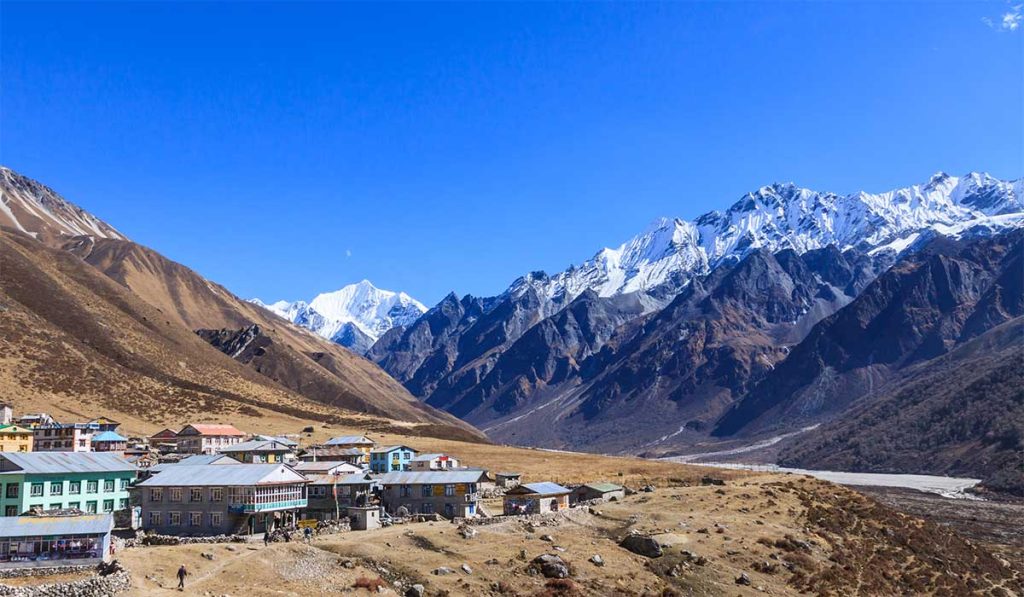Mount Everest is the ultimate climbing destination and probably a dream for every climber around the world. And it’s not surprising as well because reaching its summit means raising your head higher than the entire world. But the thing people don’t know about it is that it’s not just beautiful but also scary, weird and horrific.
This article will take you deep into the reality behind what television and the Internet have shown you. Get ready to informally explore the Rainbow Valley of Everest, perhaps the scariest side.

What is Rainbow Valley?
When you first read the name and imagine it, you may think about a stunning valley that is blessed with beauty and called the Rainbow Valley. However, the reality is equally crazy and scary. Let’s understand in detail.
The Rainbow Valley is located above 8,000 meters on Everest’s northeastern ridge, particularly in the “Death Zone.” The Death Zone refers to the area of Everest above 8,000 meters (26,247 feet) where oxygen is so low that the normal human body cannot even function properly.
Now, it is obvious that climbers must face the Death Zone in order to conquer the Everest. But not all those who dare to face this killer zone are lucky enough to claim victory over it. Over the centuries, thousands of climbers have climbed Everest; meanwhile, thousands have been punished by their unlucky fate and buried under the snow. Many of them are in the death zone, whose bright jackets, boots, and gear colors the white snow. This place is called the Rainbow Valley.
Why does Rainbow Valley have such a high death rate?
Climbing Mount Everest is not only difficult – it is extremely dangerous, especially in the Death Zone. In this area, the oxygen levels are very low, which causes the human body to suffocate unless extra oxygen is supplied through oxygen masks. The main reasons why so many climbers die in Rainbow Valley are listed below:
Lack of oxygen
There is barely one-third of the oxygen in Rainbow Valley compared with the sea level. For this reason, climbers must carry the oxygen cylinders with them to survive. However, it is not easy to carry them to that height, which is why they’re carried just enough for each climber. This can sometimes be insufficient when climbers have to wait a long time in the Death Zone due to a large number of summit attempters or natural calamities. Without adequate oxygen, climbers can suffer from altitude sickness, hallucinations, or even lose consciousness, and rescuing them from the Rainbow Valley is almost impossible due to extreme conditions. This results in the direct death of the climber, ultimately.
Extreme weather
Sometimes, the weather is too harsh for climbers to handle. The strong winds, extreme cold, and sudden snowfalls are always the prime challenges besides oxygen. A minute undermining in safety in the mountains is also not negligible in such conditions. And the same happens. Some lose their gloves, some others catch cold due to carelessness, and some get stuck in the bad weather. All of these are nothing but the steps to their death.
Fatigue
Mountain climbers spend hours and hours going through deep snow and thin air, especially when they cross the 8000 m. Their bodies become weak, exhausted, and slow. In this situation, even simple tasks, such as eating or fixing oxygen masks, can be very difficult. You have to remain hydrated, but your body does not want water. You cannot afford to stop, but your body demands rest. These circumstances are everyone’s test, and those who fail are murdered by the harsh conditions of Everest.
Falls and accidents
Falls and accidents are the reason for several deaths in Rainbow Valley. The trail there is narrow and dangerous. One wrong step can lead to a fall from steep rocks. There is no chance of survival if this happens. Moreover, sometimes even when the climbers are doing great, they become the victims of natural calamities such as avalanches or icefalls. Stats show that almost 25 – 30% of the deaths in the Rainbow Valley are due to falls, and about 15% are due to avalanches and icefall.
No rescue assistance
The darkest and most inhumane fact about Everest is that once you get ill at the Rainbow Valley and cannot continue your expedition, you are left to die, even by your own team. This is due to the fact that rescuing at 8000 m+ altitude is almost impossible, not even by a helicopter. If your teammates wait for you, they will die there with you. This sounds like a myth, but actually the truth, probably the cruelest. This incident had already happened to an English mountaineer named David Sharp. You will learn more about him further.
All this makes Rainbow Valley a deadly network for those underestimating the mountain. This region shows how deadly Everest can be, even for the most experienced climbers.
Notable events and bodies in the Rainbow Valley
To date, many climbers have lost their lives in the Rainbow Valley, but only a few of them are remembered because of the way they died or the way their bodies are still on the mountain. Here are their discussions you must check out:
Green boots
One of the most famous bodies in Rainbow Valley is known as “green boots“. The name comes from the light green climbing shoes he wore. His body is located in a small cave near the main trail to the summit. For many years, every climber on Northeast Ridge had to pass him.
It is believed that the person wearing the green boots was Tsewang Paljor, an Indian rock climber, who was killed in a snowstorm in 1996. His body has now become a landmark for other climbers on their way to the Summit.

Photo by Maxwelljo40 via Wikimedia Commons
David Sharp
In 2006, a British climber named David Sharp submitted the peak and was descending. Till the time he reached the ‘green boots’, he was suffering from extreme hypothermia, frostbite, and exhaustion. Due to these, he could not push himself further and, as a result, had to die under the rocky overhang, sitting with arms clasped around his legs, next to Green Boots.
But the most tragic part about the incident is that he was not alone there. Even though he was on a climbing solo, more than 40 climbers passed him while he was still alive, but no one stopped for him, not because they didn’t notice him, but because they were afraid for their own lives. This incident shook the world and created a huge debate: Should climbers put their lives at risk to help others, or is it very dangerous?
Francys
Francis was the first American woman to reach the top of Everest without using artificial oxygen (1998). But when she was descending, she became too weak to continue. Her husband, Sergei Arsentiev, tried to save her, but he also died. Francys’ body remained on the mountain for years before climbers moved it off the main path for a respectful funeral.
These stories are just some examples. Rainbow Valley is full of similar tragedies of people who dreamt of reaching the top, but never returned.
Why are bodies not removed from the Rainbow Valley?
Many people wonder: Why don’t they bring the dead bodies down from Rainbow Valley? The answer is heartbreaking, but it is true – it is very dangerous. Here are the reasons explained:
Very hard and risky
At that height, each stage is a challenge. The wind is thin, cold is deadly, and climbers are already tired. Trying to carry a heavy, frozen body along narrow, icy trails can endanger other lives. In the death zone, saving someone else can result in losing your own.
Even experienced Sherpas and rescue teams often refuse to retrieve bodies. Some bodies are trapped in deep ice or under rocks, making them nearly impossible to recover.
Even helicopters cannot help
Helicopters cannot fly in the summit area because the air is too thin to create lift, oxygen is very low for the engine to function properly, and the weather is too unpredictable. This means rescue teams must climb up and down from the trail, which takes days and a tremendous amount of energy.
It’s too expensive
Even when possible, removing a body from Everest can cost between $ 30,000 to $ 70,000 USD or more. This involves hiring a team to work, paying for dangerous work with special equipment, and working under extreme conditions. Many families can’t just bear this cost.
Some families choose to leave them
Some climbers ask their families not to try to recover their bodies if they die. They will remain part of the mountain forever. For many people, dying on Everest is part of the dream, even though it’s a sad ending.
Because of all this, many climbers are left where they died. This made the Rainbow Valley become a quiet cemetery, where the mountain holds its memories. Each body tells the story of courage, risk and true costs to pursue the summit.
Ethics of Rainbow Valley and climbing Everest
Rainbow Valley not only reveals the dangers of Everest, it also raises serious moral questions. One of the biggest dilemmas climbers face is, should you risk your life to save someone else on their deathbed?
At such a great altitude, everyone is tired, exhausted, and low on oxygen. Helping someone who is injured or sick can seriously mean sacrificing your own life. This tough reality has given rise to many cases where people who died are the ones left behind, who could not be helped.
David Sharp’s tragic death sparked a global debate about what is right or wrong on Everest. Some see it as cruel; Others see it as the only possible option in such extreme situations.
In addition, Everest has become very commercial. Many climbers are inexperienced and depend on the guide. This pushes the guide to make tight decisions under pressure, where often success is choosed over sacrifice.

Photo by Julius Zetzsche via unsplash
Is Rainbow Valley a symbol of courage or tragedy?
Rainbow Valley is a place full of spirit. For some, it represents courage – a place where brave climbers gave everything to reach the top of the world. For others, this is the place of deep sadness, which shows the painful price of chasing a dream.
Symbol of courage
Many people killed in Rainbow Valley were emotional, firm, and brave. They’d trained for years, put everything into it, and followed their hearts. Some did conquer the top but never came back. Their stories remind us of the power of the human soul and adventure.
Tragedy
But at the same time, Rainbow Valley is filled with tales of tragedy. The families never got to say goodbye. Some climbers were professionals, very trained, and dedicated. However, the mountain still took them, and now they live there, frozen in time.
A warning for the future
More than anything else, Rainbow Valley is a reminder for Mount Everest’s future. It asks future climbers to respect the mountain, prepare well, and understand risks. It shows that Everest is not just about ambition- it’s more about survival.

Conclusion: Final Thoughts on Rainbow Valley
The colors in Rainbow Valley are not decorations on jackets. They are the last signs of climbers who gave everything for their goals. Some died due to harsh mountain conditions, while others were victims of exhaustion, poor planning, or abandonment.
We have seen how difficult it is to help others in the Rainbow Valley and how controversies about morality, courage,and existence arise. We have also seen the costs of commercializing Everest and how it increases danger to the already deadly challenge.
Finally, Rainbow Valley is not just a sad place—it’s a mirror. This shows us the truth behind ambitions, and it makes us think:
“What does it really mean to reach the top?”
Everest will always inspire climbers. But Rainbow Valley will always remind us that even the highest dreams can have the darkest shadow.
Summary Table
| Rainbow Valley Quick Facts | |
|---|---|
| Aspect | Details |
| Location | Northeast Ridge, below the Everest summit |
| Elevation | 8,500 meters (27,887 ft) |
| Origin of the Name | From the colorful jackets and gear on frozen climbers |
| Why do people die there? | Altitude sickness, exhaustion, cold, falls, and lack of rescue options |
| Body Recovery | Very rare due to extreme conditions |
| Famous Case | Green boots, David Sharp, Francys Arsentiev |
| Rainbow Valley Death Info | |
|---|---|
| Attribute | Statistics |
| Body count | 40 – 50 + |
| First known body spotted | 1990s |
| Most seen body | Green Boot |
| Annual additions | 1 – 3 bodies per year |
| Cause of Death in Rainbow Valley | |
|---|---|
| Exposure / Hypothermia | 30–35% |
| Falls / Accidents | 25–30% |
| Altitude Sickness (HACE/HAPE) | 15–20% |
| Avalanches | 10–15% |
| Other (crevasse, heart failure) | 5–10% |

